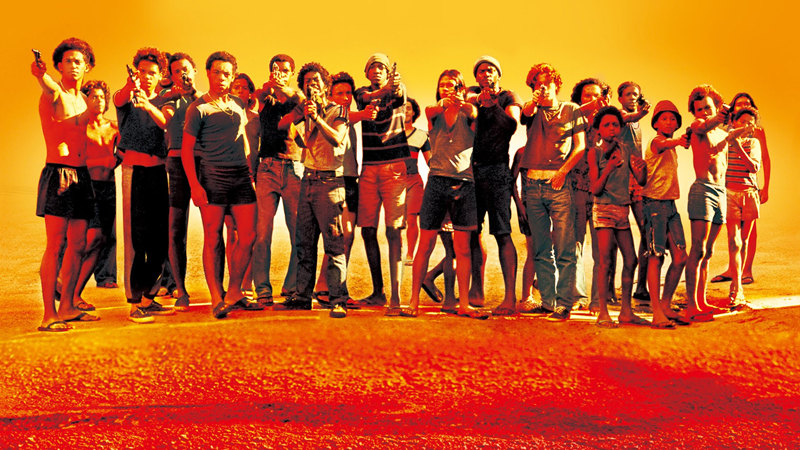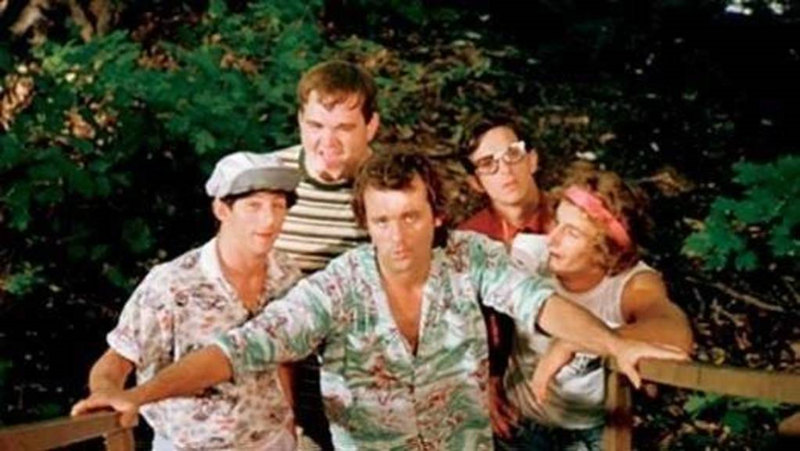Simply put, “Lawrence of Arabia” is the best epic the screen has ever seen. In terms of sheer sweep, intelligence, and star power, nothing much comes close. It made both T.E. Lawrence and actor Peter O’Toole household names. Much as Columbia TriStar did with “The Bridge on the River Kwai,” another grand entertainment from director David Lean, the studio has put together a handsome, if slightly flawed, Limited Edition two-disc set that at least begins to convey some of the scope and beauty of the 1962 Oscar-winning production.
Of course, no mere television setup can duplicate the sheer size of a movie-theater screen, which is what the splendor of the film deserves, but for all practical purposes this DVD set approaches what can be accomplished within the limited confines of home viewing. It may have a smaller screen and a less-than-perfect transfer, but “Lawrence of Arabia” remains an awesome experience.
The story begins with Lawrence’s death in a motorcycle accident in 1935; then, it flashes back from his funeral services to the beginning of his exploits in Arabia during World War I, starting in about 1915. The film does not attempt to be historically accurate and is based loosely on Lawrence’s own accounts of his adventures in his book “The Seven Pillars of Wisdom,” wherein he rather immodestly makes himself even larger than life than he may really have been. Poetic license worked for Lawrence, and poetic license works equally well for director Lean in creating a figure of legendary proportions and a movie of grander dimensions yet.
According to the story, Lawrence helped the divided Arab tribes to unite against the Turkish Empire in the Great War. His hit-and-run, guerilla-warfare tactics won him triumphs in the desert no one thought possible. Through a series of audacious victories, he earned the trust, respect, and loyalty of the Arab peoples and became a hero to the world, even though it almost drove him mad. Why he wanted any of this the movie leaves up in the air.
The thing is, no one seems to have known or understood the real Lawrence, perhaps not even Lawrence himself, and the film does little to clarify the situation. He may be the twentieth century’s ultimate enigmatic celebrity. Certainly, history records him as a scholar, British soldier, military strategist, Middle East advisor, and writer. But Lawrence may best be known today as the romantic, mythic embodiment of screen star Peter O’Toole, the actor and the historical figure now so thoroughly intertwined. Of course, it helped that O’Toole was given one of the most literate scripts ever written (Robert Bolt and Michael Wilson), a terrific supporting cast (Omar Sharif, particularly, Alec Guinness, Anthony Quinn, Jack Hawkins, Jose Ferrar, Anthony Quayle, Arthur Kennedy), an Award-winning musical score familiar to everyone (Maurice Jarre), the vast deserts of Jordan and Morocco, and the direction of a man who had already produced not only “The Bridge on the River Kwai,” “Great Expectations,” and “Oliver Twist,” but who would go on to do “Doctor Zhivago,” “Ryan’s Daughter,” and “A Passage to India.”
Is it any wonder the film couldn’t lose when on every page of the script it has lines like this one from Prince Feisal (Guinness): “With Major Lawrence, mercy is a passion. With me, it is merely good manners.” The whole movie is a series of such unbroken successes.
Lawrence establishes his resolve early on when he snuffs out a lighted match with his fingertips. A soldier nearby tries the stunt and burns his fingers. “It damn well hurts!” he exclaims. “Certainly, it hurts,” replies Lawrence. “The secret is not minding if it hurts.” When a moment later Lawrence blows out a match, Lean uses a brilliant cut to the sun rising on the desert. The young Lieutenant Lawrence would quickly rise through the ranks to major and then colonel as his peerless deeds continued. “Nothing is written” becomes his motto, and Lawrence begins puffing up his own ego by attempting the seemingly impossible. Part warrior, part showman, and part adolescent in billowing white robes, the young man seems almost like a kid at play when he says the whole adventure “sounds like fun.” Perhaps he was, after all, a brilliant and daring joy rider, as his later motorcycle death attests.
The film also relies heavily on spectacle and on the sheer charisma of its star. There is nothing like those sweeping desert scenes to pump up the blood and nothing like O’Toole’s spindly, sometimes awkward, sometimes preposterous screen portrayal to maintain our attention. O’Toole really is riveting. Naturally, in a film produced back in 1962 little is made of the real-life Lawrence’s homosexuality, but that’s to be expected. There is a scene with a Turkish general (Ferrar) who appears to derive sexual satisfaction from Lawrence’s torture, there are a couple of young, handsome Arab servants who are devoted to the man, and there is O’Toole’s occasionally effeminate way of speaking and moving that are suggestive, but nothing more.
Video:
Lean shot the film in Super-Panavision 70, yielding a screen size of 2.20:1, rendered through the DVD as approximately 2.02:1, reasonably close. The movie was restored to much of its natural grandeur in 1988 by Robert A. Harris, who also reconstructed many scenes that had been edited over the years. The actual picture quality, however, can range from startlingly realistic, rich and vivid, to slightly faded and surprisingly grainy. There is, additionally, an odd set of vertical light bars faintly visible in the middle of the screen from time to time. The grain one can understand and may have been part and parcel of the original restored film stock, with probably some additional grain introduced in the digital transfer. With such vast areas of screen real estate taken up by solid blocks of sky and sand, the delectability of grain is inevitable. But the streaks of light are a mystery. Fortunately, and also rather mysteriously, part two on the second disc looks altogether better.
Audio:
The sound track comes in a couple of modes–Dolby Digital 5.1 and Dolby Surround. The differences in the two can be marked. I know, because Dolby Surround is the default, something I didn’t notice until some five or ten minutes into the film. When I switched over to DD 5.1, which, annoyingly, can only be done by returning to the main menu, the sonics suddenly tighten up, becoming more dynamic and more pronounced, and filling the rear speakers with more discrete noises. Maurice Jarre’s famous music, conducted by Sir Adrian Boult and the London Philharmonic, old hands at pomp and ceremony, must be heard in this new DD 5.1 mix to be fully appreciated. Still and all, the sound also carries with it a degree of steeliness that can too often appear strident and nasal, and the music can often make its entrance with such a loud impact it can force your hands to your ears. When it comes to dynamic range, there are times when one can get too much of a good thing.
Extras:
The Limited Edition set is housed in the same kind of clothbound case as “The Bridge on the River Kwai,” a most attractive and refined alternative to the ordinary plastic keep case. Inside, one finds a reproduction of the original 1962 souvenir booklet and two DVDs. The first disc contains part one of the film up to the intermission; the second disc contains part two and all the supplementary material. The film’s 217 minutes of running time does not include the music of the overture or entr’acte, about ten minutes worth, which is played over a blank screen as the director intended. The main bonus is a recently produced one-hour documentary, “The Making of Lawrence of Arabia,” a behind-the-scenes exposition featuring interviews and reminiscences by surviving stars and crew. Next, there’s a nine-minute conversation with Steven Spielberg, in which the famous filmmaker pays tribute to the older director, with clips from the film. It’s interesting to hear Spielberg say that at the screening of the restored print, Lean sat next to him and kept up a running commentary about the film’s production. What we wouldn’t give to have that commentary as an audio supplement. Then, there are four featurettes: “Maan, Jordan: The Camels are Cast,” “In Search of Lawrence,” “Romance of Arabia,” “Wind, Sand and Star: The Making of a Classic,” each of them contemporaneous with the making of the film and lasting about two to five minutes apiece. The image quality is not the best on them, and they are promotional pieces at best. There is also some original newsreel footage of the New York premiere, a montage of advertising campaigns, a generous set of talent files, and DVD-ROM goodies that include historic photographs and an interactive map of the Middle East. Finally, fifty-six animated scene selections and three theatrical trailers round out the extras. English, French, Spanish, and Portuguese are the spoken language options, with Columbia’s usual array of subtitles in English, French, Spanish, Portuguese, Chinese, Korean, and Thai.
Parting Thoughts:
No doubt, “Lawrence of Arabia” is one of the screen’s great classics, occupying the number five spot on the American Film Institute’s list of top 100 films of all time. Additionally, it won seven Academy Awards, not too shabby, for Best Picture, Best Director, Best Art Direction/Set Decoration, Best Color Cinematography, Best Film Editing, Best Musical Score, and Best Sound; with Peter O’Toole and Omar Sharif nominated for Best Actor and Best Supporting Actor respectively and Robert Bolt nominated for Best Screenplay. Nope, not too shabby, indeed. Another no-brainer; it belongs in every video collection.


